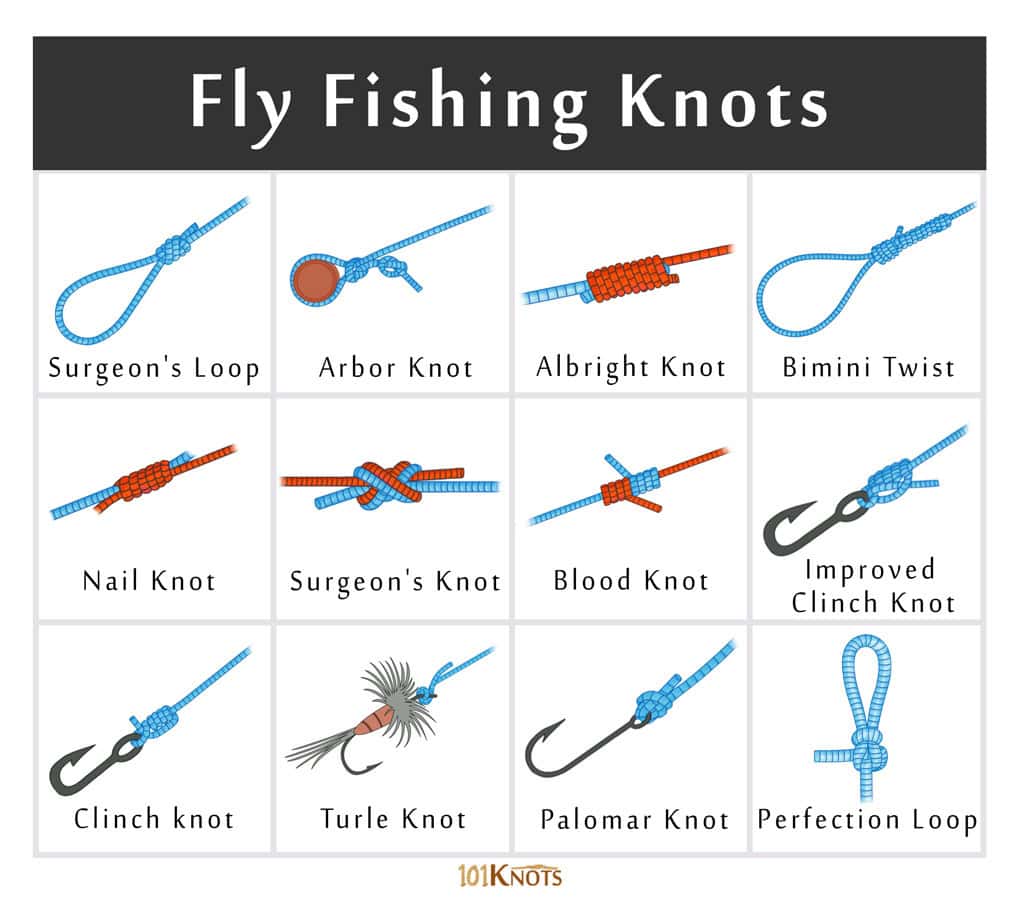If you’re an avid fisherman, then you know that having a strong and reliable fishing knot is crucial for successful fishing trips. Whether you’re fly fishing or spinning, using the right knot can make all the difference in landing the big one. That’s why we’ve put together this list of different types of fishing knots and how to tie them.
The Improved Clinch Knot

The Improved Clinch Knot is one of the most popular and reliable knots used by anglers. It’s perfect for attaching hooks, swivels, and lures to your fishing line. To tie the Improved Clinch Knot, simply pass the line through the eye of the hook, make five turns around the standing line, and then pass the end of the line through the first loop formed behind the eye. Finally, moisten the knot and tighten it by pulling both ends of the line.
The Palomar Knot

The Palomar Knot is known for its simplicity and strength. It’s great for attaching hooks, lures, and swivels to your line, especially if you’re using braided fishing line. To tie the Palomar Knot, double about six inches of line and pass it through the eye of the hook. Tie an overhand knot, but don’t tighten it all the way. Pass the loop over the hook, moisten the knot, and then tighten it by pulling both ends of the line.
The Blood Knot

The Blood Knot is perfect for joining pieces of fishing line of similar diameter. It’s commonly used when building leaders or tying two lines together. To tie the Blood Knot, overlap the ends of two lines for about six inches. Take one end and wrap it around the other line four to six times. Then, pass the end of the line through the loop between the two lines. Repeat the same process with the other line in the opposite direction. Finally, moisten the knot and tighten it by pulling both ends of the lines.
The Albright Knot

The Albright Knot is perfect for joining different types of fishing line of different diameters, especially when attaching a monofilament leader to a braided mainline. To tie the Albright Knot, double about 12 inches of the mainline and create a loop. Pass the leader through the loop and make about ten wraps around the loop with the leader. Then, pass the end of the leader back through the loop. Finally, moisten the knot and tighten it by pulling both ends of the lines.
These are just a few examples of the many different types of fishing knots you can use. Each knot has its own advantages and specific uses, so it’s important to practice and become familiar with a variety of knots for different fishing situations. Remember to always moisten the knots before tightening them to prevent friction and ensure a strong hold.
In conclusion, mastering different fishing knots is essential for any angler looking to improve their fishing skills. Whether you’re a beginner or an experienced fisherman, having a repertoire of reliable knots will give you the confidence to tackle any fishing challenge. So next time you’re out on the water, make sure you have the right knot tied up and get ready to reel in those big catches!